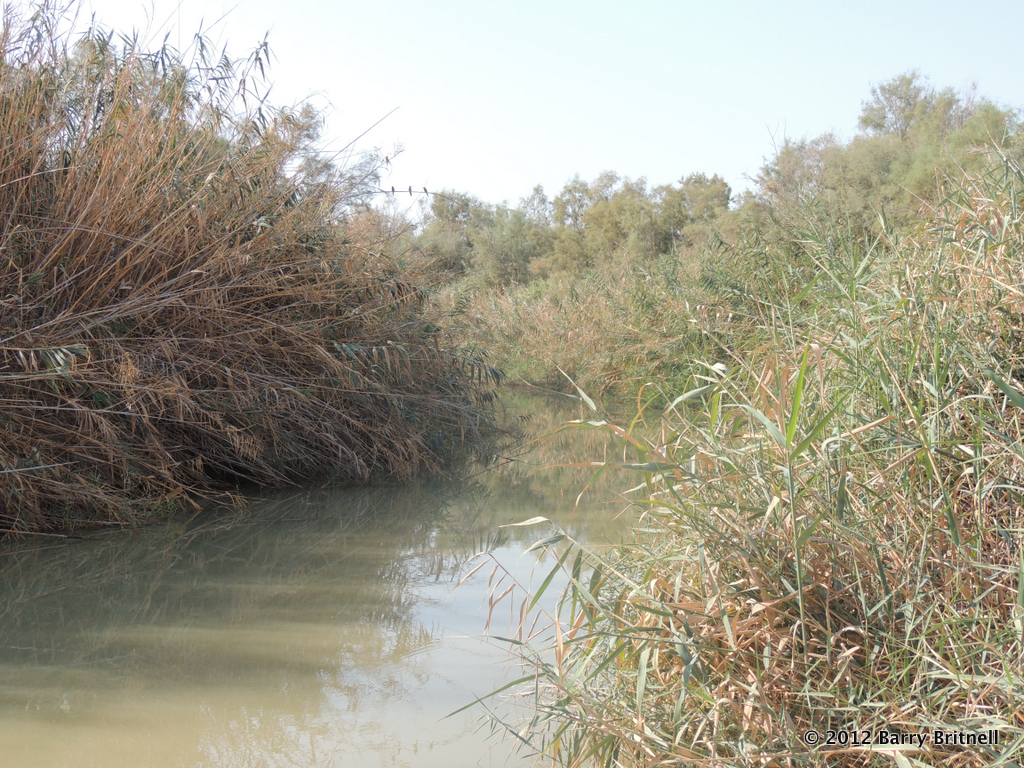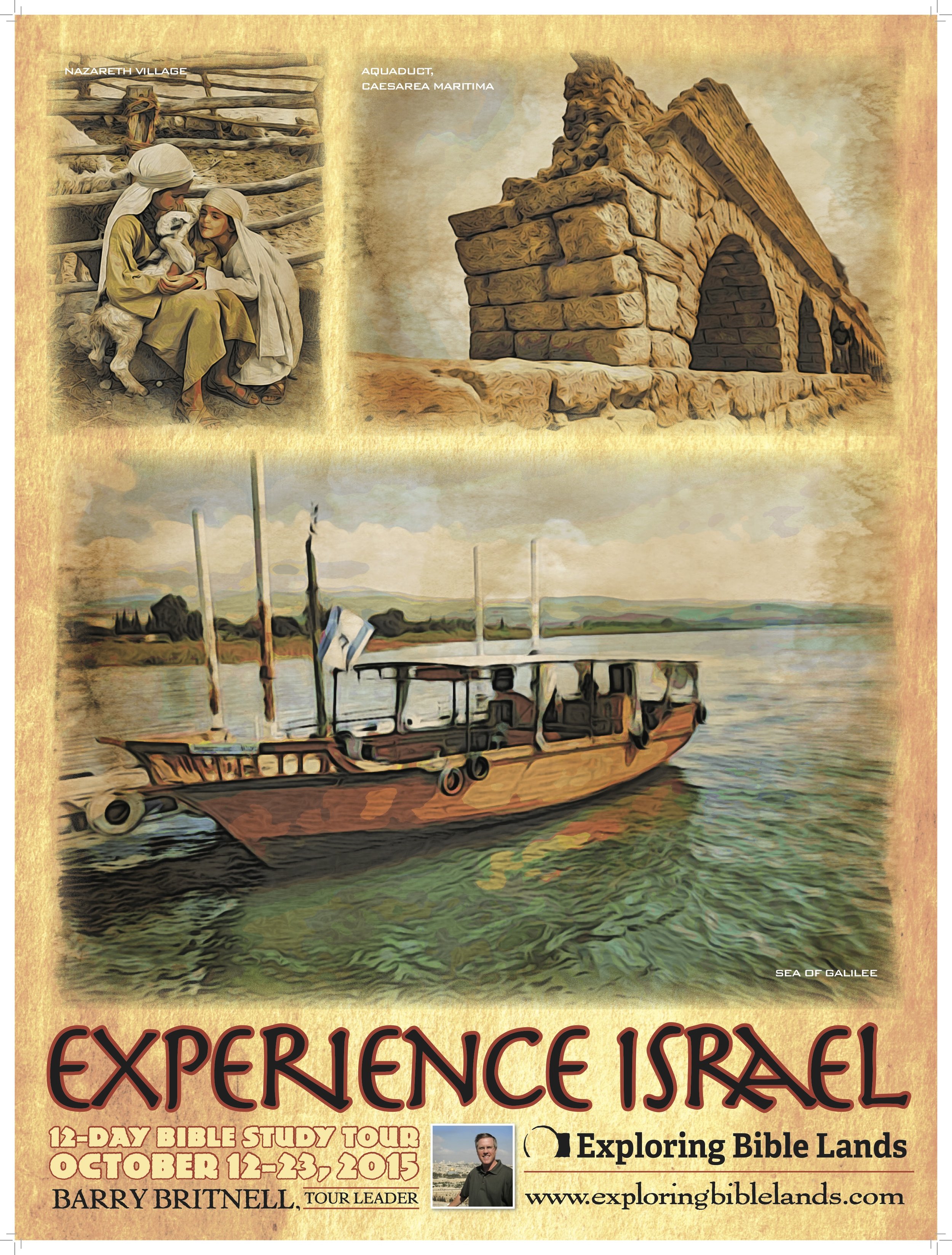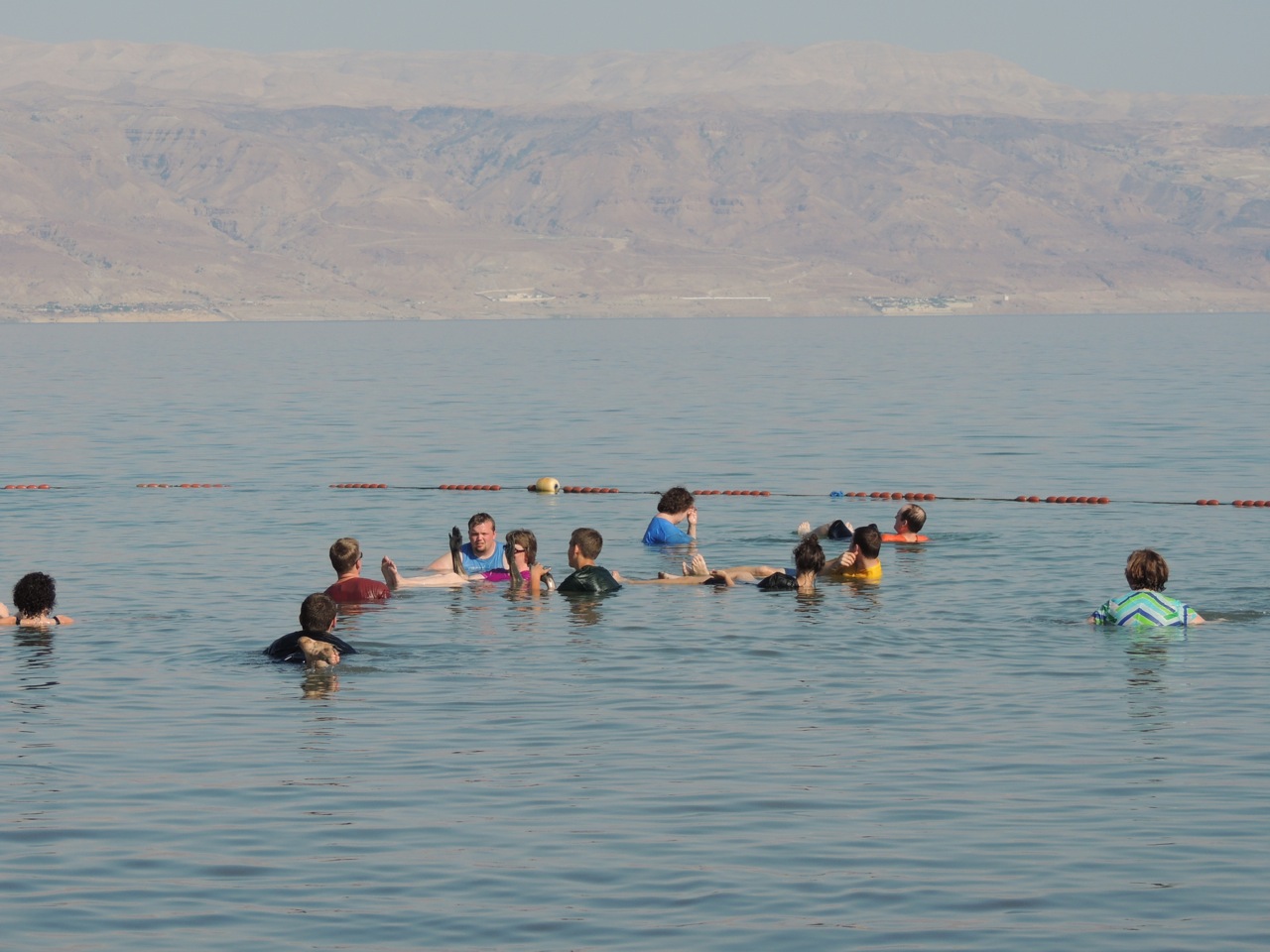Today was spent in an around the Dead Sea in the Wilderness of Judea. We had a surprise visit this morning at Qasr al-Yahud, which is near the traditional location of the baptism of Jesus. In the Gospels, we read that John was baptizing at "Bethany beyond the Jordan". So, John was actually baptizing at a location on the other side of the Jordan River. However, this is as close as we can get without going into the country of Jordan. Due to irrigation and water control, the river at this point is very narrow compared to what it was in Biblical times.
 We then traveled down to the vacation home of Herod the Great, Masada. The history of Masada is something that every person should study. Consequently, I won't go into that now and leave that to your personal study. Masada is never mentioned by name in the Bible, however it might have been referenced. The word "masada" means fortress. While in the area, the scriptures mention that David visited a fortress on three different occasions. In addition, David mentions a fortress in four of his psalms. So, it is highly possible that David visited here. I had one other interesting experience at Masada, which I'll discuss later.
We then traveled down to the vacation home of Herod the Great, Masada. The history of Masada is something that every person should study. Consequently, I won't go into that now and leave that to your personal study. Masada is never mentioned by name in the Bible, however it might have been referenced. The word "masada" means fortress. While in the area, the scriptures mention that David visited a fortress on three different occasions. In addition, David mentions a fortress in four of his psalms. So, it is highly possible that David visited here. I had one other interesting experience at Masada, which I'll discuss later.
From there, we traveled north for a brief stop at En Gedi (where David hid while he was being pursued by Saul), Qumran (the location of the discovery of the Dead Sea Scrolls) and Jericho. I've been to Jericho twice and it is one of the highlights of my trip. The tel that we visit is from Old Testament Jericho (New Testament Jericho was in a slightly different location). From that tel, you can see the size of the city, so you know exactly how far the Israelites marched as they circled the city for seven days. You can also envision Rahab, who built her house on the wall of the city. She could look out her window and see the Israelites as the encamped in the plains of Moab across the Jordan River. It is a fascinating place.
Tomorrow is an early day. We have to leave the hotel at 7:00am in order to be in the Old City in time to enter the Temple Mount by 7:30. So, I'll need to get to bed soon.
 However, back to Masada. I'm an amateur hiker. I really enjoy hiking in the Smokies and have hiked many miles there. At Masada, you have two choices to get to the top. The first choice is a tram lift that will take you to the top in about 3 minutes. The second is the traditional route (the same route that the people of the time would have used) via the "Snake Path". The trail is only 2 kilometers long, but it climbs over 350 meters in that distance. (I'll leave it as a math exercise for you to figure out how steep that is.) There were about 10 others in the group that wanted to hike the Snake Path, so I thought that I would give it a shot. Well, I made it. However, it wasn't a complete success. When we left, the temperature was about 30 degrees Celcius (another math exercise for you) with no clouds (rain rarely falls here) and very little wind (we are at the lowest place on earth). I made the trip up okay, but soon after arriving at the top, I started to get tingling feelings in my fingers. Since that is one of the first signs of heat exhaustion, I knew that I needed to take care of myself quickly. I took the first tram back to the visitor's center and immediately bought a coke. I sat down in the cool air and began to recover. Our outstanding tour guide, Elie, and could see that I was doing better, but thought that I needed something else. He disappeared and came back with a Gatorade. I drank it and immediately started feeling better. So, here is what I learned from today: if you decide to hike the Snake Trail, you'll need at least two bottles of water, not just one. (And, let's keep this between us. There is no need to let Tabatha it.)
However, back to Masada. I'm an amateur hiker. I really enjoy hiking in the Smokies and have hiked many miles there. At Masada, you have two choices to get to the top. The first choice is a tram lift that will take you to the top in about 3 minutes. The second is the traditional route (the same route that the people of the time would have used) via the "Snake Path". The trail is only 2 kilometers long, but it climbs over 350 meters in that distance. (I'll leave it as a math exercise for you to figure out how steep that is.) There were about 10 others in the group that wanted to hike the Snake Path, so I thought that I would give it a shot. Well, I made it. However, it wasn't a complete success. When we left, the temperature was about 30 degrees Celcius (another math exercise for you) with no clouds (rain rarely falls here) and very little wind (we are at the lowest place on earth). I made the trip up okay, but soon after arriving at the top, I started to get tingling feelings in my fingers. Since that is one of the first signs of heat exhaustion, I knew that I needed to take care of myself quickly. I took the first tram back to the visitor's center and immediately bought a coke. I sat down in the cool air and began to recover. Our outstanding tour guide, Elie, and could see that I was doing better, but thought that I needed something else. He disappeared and came back with a Gatorade. I drank it and immediately started feeling better. So, here is what I learned from today: if you decide to hike the Snake Trail, you'll need at least two bottles of water, not just one. (And, let's keep this between us. There is no need to let Tabatha it.)
Until tomorrow….
















